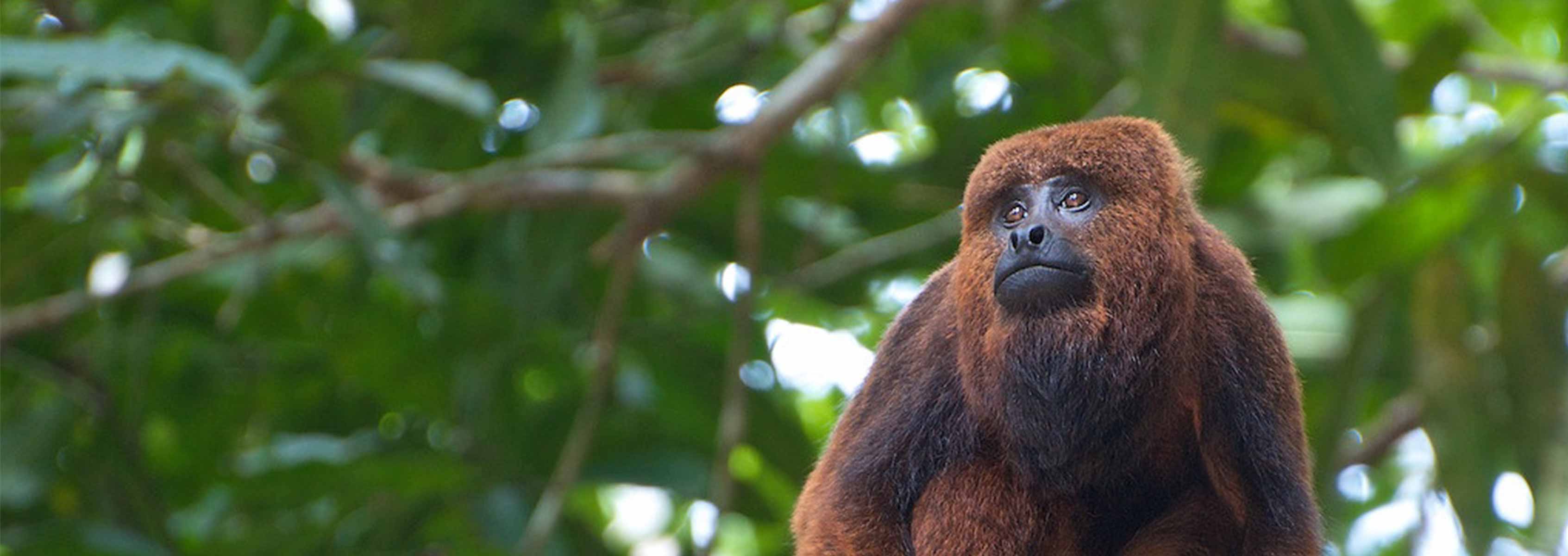Gastrointestinal Microbial Community Composition and Habitat Structure in Howler Monkeys (Alouatta pigra)

Howler monkeys (Alouatta sp.) are among the most folivorous of the New World monkeys and have highly flexible diets. However, despite the fact that groups of howlers exhibit distinct diets depending on spatial and temporal patterns of resource availability, activity patterns are consistent across howler groups and species.
High levels of fiber and toxins in leaves make gut microbial fermentative activity essential to howler nutrition, and based on studies with other mammals, it is possible that differences in gut microbial community composition allow groups of howlers in different habitats to take advantage of distinct resources to fuel the same activities.
To investigate variation in gut microbial community composition within a species, we collected fecal samples from five groups of black howler monkeys (Alouatta pigra) in Mexico over an eight-week period (May-July 2009). Two of these groups inhabited a continuous, tall rainforest. The other three inhabited a fragmented, tall rainforest; a continuous, semi-deciduous seasonal forest; and a rehabilitation center.
Following the isolation and purification of microbial DNA from all samples, we used community fingerprinting (ARISA) and high-throughput sequencing of the 16s ribosomal RNA gene (V1-V3) to describe the microbial community structure in each group. Our sequencing resulted in >2.6 million reads from 33 individuals, giving us unprecedented sequencing depth.
Preliminary analyses indicate that differences in gut microbial community composition are related to the environment each group inhabits. Basic ecological data suggest that these differences are a result of diet composition. Differences in host monkey microbial communities may have important implications for primate adaptation, evolution, and conservation.
Publications
Microbial ecology. 2017-07-01; 74.1: 250-258.
Patterns in Gut Microbiota Similarity Associated with Degree of Sociality among Sex Classes of a Neotropical Primate
Oecologia. 2016-03-01; 180.3: 717-33.
Phylogenetic and ecological factors impact the gut microbiota of two Neotropical primate species
Microbial ecology. 2015-02-01; 69.2: 434-43.
The gut microbiota appears to compensate for seasonal diet variation in the wild black howler monkey (Alouatta pigra)
American journal of physical anthropology. 2014-12-01; 155.4: 652-64.
The role of gut microbes in satisfying the nutritional demands of adult and juvenile wild, black howler monkeys (Alouatta pigra)
The ISME journal. 2013-07-01; 7.7: 1344-53.
Habitat degradation impacts black howler monkey (Alouatta pigra) gastrointestinal microbiomes
Funding
This project was funded through National Science Foundation (NSF) grant #0935347.